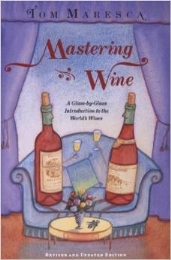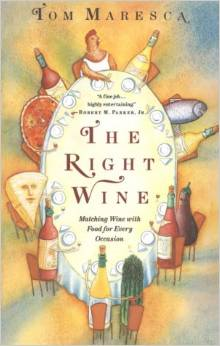When I think about shipboard dining, I tend to time-warp fantasize about a first-class table – and wine list – on a transatlantic crossing on the old Normandie or Île de France. Glamor and great bottles! Alas, those days are gone forever, and the kind of shipboard dining I actually do is far more quotidian, aboard river boats cruising French rivers. The wines there amount to sort of a cross between the wine list of a decent resort hotel and what’s available on the Jersey Shore – long on utility, but very short on glamor.
All this is prologue to telling you about the casual imbibings of Diane’s and my recent stint in France – three days in Paris, plus a week cruising on the Seine. Very relaxing, even charming, but in no way glamorous.
.
Of course we drank wine every day: Being in France, and on vacation, twice a day, lunch and dinner, which is something we almost never do at home. A lot of the wine was quite enjoyable, simple stuff for easy drinking, which, when you think about it, is what a river cruise line ought to offer. Certainly none of the other 136 passengers on the Seine Princess seemed at all unhappy with any of it. Me, I’m a crank, a wine snob, and/or a fussbudget, as most of my readers already know, so I kept looking around for more or better. But I’m getting ahead of myself.
The Croisieurope line, with which we were sailing, routinely offers a short list of wines at lunch, dinner, and the ship’s bar, from which it pours generously and at no charge. It has a reserve list of somewhat better wines at low fees for the special occasion or the more demanding client. That was us: We hit the reserve list almost every dinner. We hadn’t gone on vacation to save money.
Given the chef’s heavy leanings toward fish, fowl, and white meats, with most lunches we drank the basic list’s decent unoaked Languedoc Chardonnay, which made a pleasant lubricant for most of the kitchen’s fare.
.
.
Dinner was not quite as white-wine exclusive, but even there, whites were often called for. The reserve list accommodated: There too, white wines – some nice older ones included – preponderated. The most interesting of those wines for us was a very nicely aged 2010 Alsace Riesling from Roland Petterman, which showed a good structure and still-interesting fruit – a nice, mature white wine.
.
.
Not as old but still quite interesting – and red! – were two 2016 wines from Chapoutier: a Crôzes Hermitage, Petite Ruche, and a St. Joseph, Deschants.
.
.
Both were very fine and representative of their kinds, even though I would have liked them just a few years older. I’ve always been fond of Rhône wines, white and red, and I find that most of them age exceptionally well. These two fit that bill very nicely and were certainly the most enjoyable wines we drank onboard.
I should add that for our three dinners in Paris, we most happily drank red: a very nice 2020 Chinon from Marc Brédif at Père Louis (see Diane’s post), a fine but young 2014 Brane Cantenac at Benôit, and a very nice 2008 Domaine de la Chevalerie Bourgueil, Busardières at our beloved Au Petit Riche. I’ve always loved those Loire reds also, and Au Petit Riche has a Loire-based kitchen and cellar.
.
.
See? It doesn’t take a lot to make me happy.





































